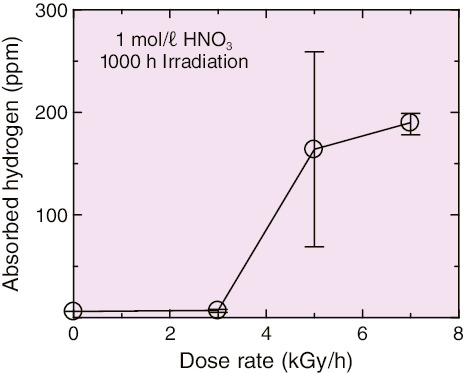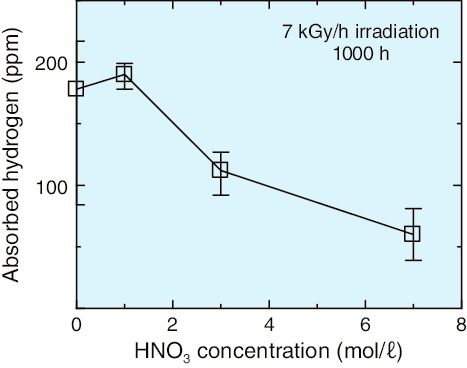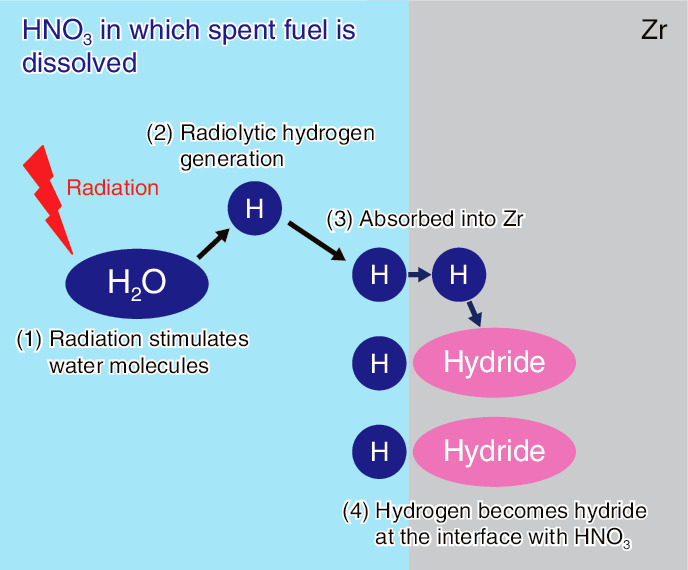
Fig.4-12 Effect of dose rate upon hydrogen absorption for Zr

Fig.4-13 Effect of HNO3 concentration upon hydrogen absorption for Zr

Fig.4-14 Schematic view of radiolytic hydrogen-absorption behavior
In spent-nuclear-fuel-reprocessing plants, high-concentration nitric-acid solutions (HNO3) at high temperature are used to dissolve spent fuel. Because zirconium (Zr) has excellent corrosion resistance in such an environment, it has been used as a structural material in spent-nuclear-fuel-reprocessing equipment.
On the other hand, it is known that Zr can easily absorb hydrogen and then become brittle. Additionally, so-called radiolytic hydrogen is generated from the reprocessing solutions under irradiation.
Therefore, it is important to understand radiolytic-hydrogen-absorption behavior to predict plant-equipment deterioration. However, there is no information on the radiolytic-hydrogen-absorption behavior on Zr in HNO3. Moreover, the present state of the absorbed hydrogen in Zr is not clear.
To elucidate radiolytic-hydrogen-absorption behavior on Zr in HNO3, we conducted an immersion test for Zr in HNO3 with Co-60 γ-ray irradiation for up to 1000 h.
After an immersion test, the average hydrogen concen-tration in Zr was increased up to 40 times (Fig.4-12). Additionally, the average hydrogen concentration decreased with the concentration of nitric-acid solutions after immersion tests (Fig.4-13).
From the measurement results of hydrogen-penetration depth in Zr following immersion tests, concentrations of hydrogen on the Zr surfaces in contact with HNO3 were observed. The results of crystalline analysis showed that the hydrogen presented as hydride in Zr.
These results show that the absorbed hydrogen quickly becomes hydride because Zr easily generates hydride. It also suggests that the absorbed hydrogen must pass through the hydride layer before Zr metal after the hydride has been formed.
In this research, we elucidated the fact that Zr can absorb radiolytic hydrogen in HNO3 and clarified that the distribution and morphology of the absorbed hydrogen (Fig.4-14).
These new findings can be used to estimate hydrogen absorption and predict hydrogen embrittlement in long-term operation of reprocessing plants. We intend to contribute to securing the structural integrity of reprocessing plants through our research activities.
The present study was sponsored by the Nuclear Regulation Authority (NRA), Japan.